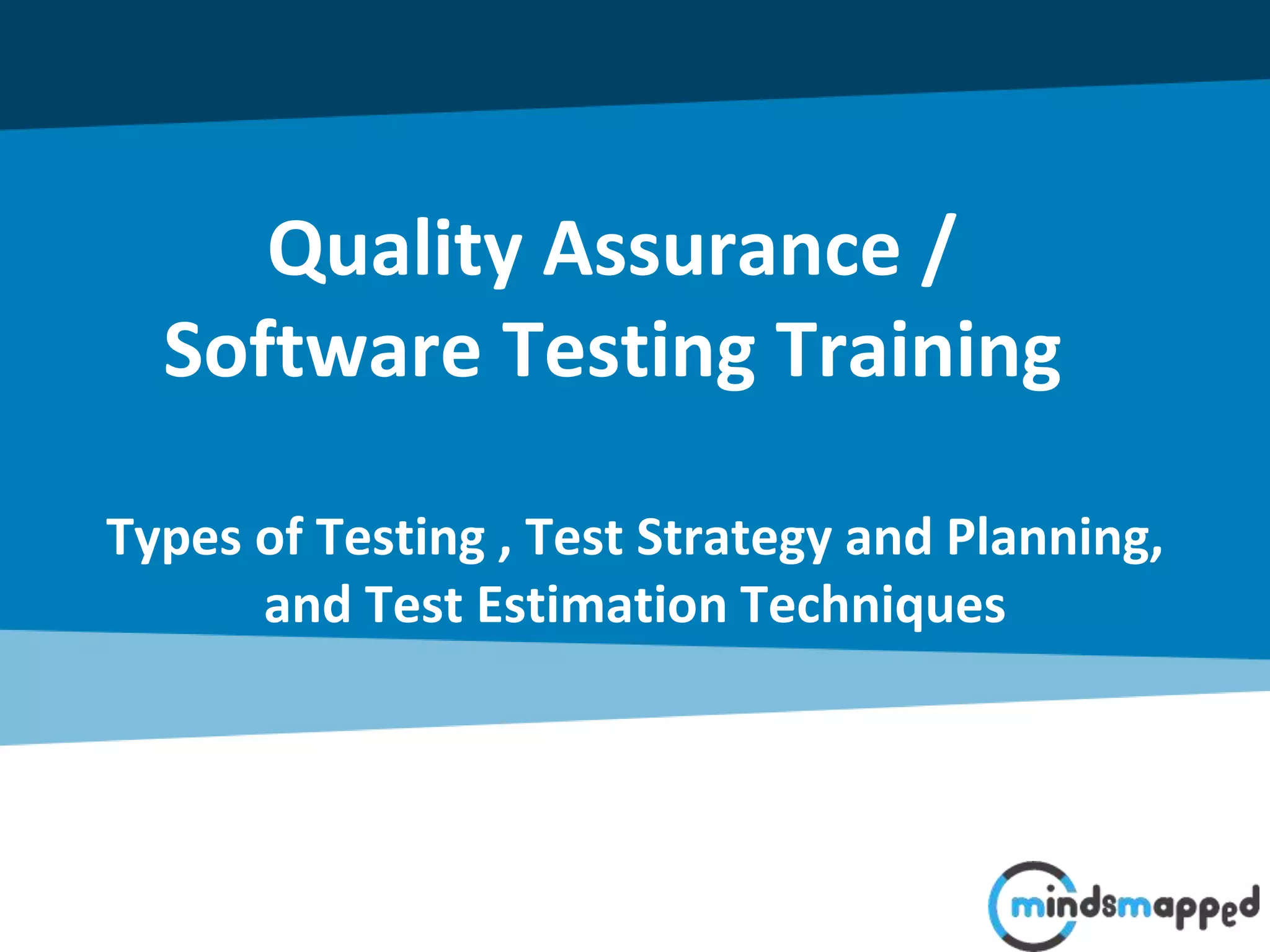The document discusses software testing strategies, emphasizing the importance of test planning and execution within the software development life cycle (SDLC), including when to start and stop testing. It outlines the roles of test strategies and plans, emphasizing their need to guide testing objectives, methodologies, and resource allocation. Additionally, it describes various test estimation techniques to ensure comprehensive test coverage and effective management of testing efforts.




















